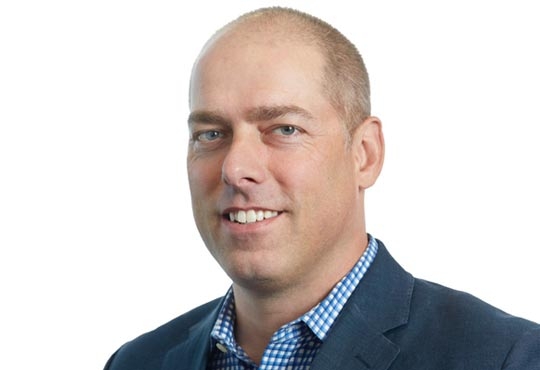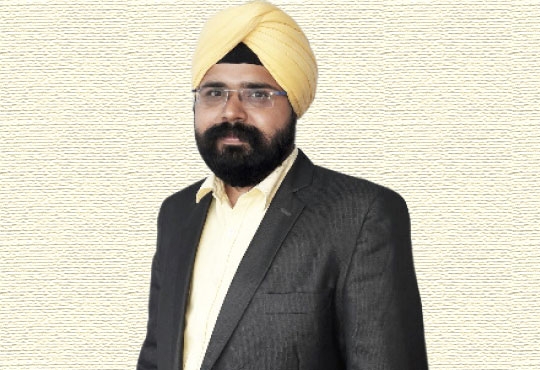
CIOTechOutlook >> Magazine >> June - 2016 issue
Integrating System Data with IoT
By
 Embracing Technology to Drive Innovation
Embracing Technology to Drive InnovationThe healthcare industry is experiencing a rapid multi-faceted shift in modality with its products, services, reimbursement, and customer. Enter the new organization proactive towards a patient’s health beyond the traditional response to an acute need only. The industry has realized there can be a “win-win” for both patient and provider by embracing responsibility for a patient’s total health continuum. The challenge is keeping connected with patients during the time while they are not in the provider’s office. I foresee technology playing a key role in this new form of connectedness. This could be as simple as intelligent messaging and response using a smart phone for health management, to having systems including wearable devices and home health environment systems that monitor, track, and respond to conditions under the management of health care professionals.
Data Integration across Enterprise
Integrating systems is a much easier task than integrating people. Getting an organization to look at its data as elements of a complete organism can be difficult when employees are not accustomed and welcoming to understand the physiology of their business. So many times the customer is lost from the equation and traditional metrics are the driver for integration. Organizations should not discount the value and necessity for employing expert analysts and database administrators. These folks are golden at identifying data sources and relationships to present the information in a meaningful and relevant way.
Pain Points within the Enterprise
I have two “pain points” that keep me awake at night. One is the availability and integrity of a patient’s health record. . With the automation and digitization of the health record, coupled with legislated retention policies and patient rights and protections, the health record becomes a paramount asset of a healthcare organization. To mitigate risk to the records, one must have an aligned backup/retrieval strategy. The cost of maintaining storage systems and targets congruent with demand is exponentially increasing. Couple of that with the expectation of 24/7/365 access to the data and services puts the health care industry on the same playing field as the financial industry.
The other is the payment/reimbursement system. About a decade ago I jumped from the university library system industry to health care. Almost immediately I was enlightened and dismayed by the way the payment system operates. The transmission protocol is based on the ASC X12N protocol standard which marries the EDI protocol with XML. Every insurance company (“payor”) has their own lexicon of procedures and services that they provide payment for. The health care provider needs to know what the insurance company will pay for and how much. The provider also needs to know the nuances/requirements the particular insurance company has with the claims submittal. It makes for a cumbersome and haphazard method for clean claims processing. With today’s technology environment and advances, I find it amazing that the vendors of our electronic record systems have not solved the need for effective electronic submission of claims with payors. Until this is addressed universally, we will continue to have deficiencies in accounts receivable and frustrated patients.
Bringing in Innovation with IoT
The Internet of Things is an exciting and disruptive technology ripe for exploitation within health care. By enabling a device to communicate with other devices and services in an ambiguous networked environment, it has the potential to untether the physical presence of a health care team with a patient. This technology is ripe for enabling true “virtual visits.” What I am waiting for is the electronic health record vendor to provide IOT gateways to their systems. IEEE is aggressively working with vendors and developers in the industry to drive standards with interoperability and security. By having a pedometer communicate wirelessly to your smart phone fitness app AND communicate to your provider’s health record system will provide a more seamless, accurate, and non-intrusive method of delivering care.
EHR—The Epicenter of Business
The electronic health record has become the epicenter of our business. It informs and drives decisions and activities to foster healthy patients. Every functional department utilizes the record system for an aspect of their business. From the provider seeing a patient, to the human resource department analyzing workforce productivity, the record system is the heart of our business.
Role of IT and CIO
The needle has definitely moved from a service/cost center to solutions/value provider. IT has a much stronger understanding of “the business” than it did a few years ago. Adelante Healthcare encourages its employees to pursue higher education opportunities. Within IT, I encourage employees to approach curriculum that includes a solid business-oriented foundation. The more one understands their organization’s business and mission, as well as how the industry works, the better one can effectively contribute to the organization. There was a time when I thought the role of CIO was becoming an organizational dinosaur and would stand for “Career Is Over” but that is not the case. I am now more of a business development strategist and futurist. The role has moved well away from just information, it is about innovations not only technology-related, but also models and methods of doing business.
IT is Your Partner
It has taken a while to ingrain the notion that IT is your partner, not your plumber. Integrating IT into the process from inception is becoming the norm. It is not uncommon to hear “wait, let’s bring in IT to hear what they have to say about it. At Adelante Healthcare, the transformation inception started with the CEO and subsequently with all leadership. Without the understanding, commitment, and value the organization has associated with IT, we would not have realized our successes today.
Promoting the Importance of Security for the Organization
Within health care, security, safety, and compliance intrinsically complement each other. As I mentioned earlier, the necessity and responsibility to protect our number one asset, your health record, and subsequently your health, promotes the importance of security for the organization. As the scale and scope of the organization grows, the capacity of a CIO to provide the focus and attention to security and privacy starts to wane. The golden moment when the organization can create and sustain a dedicated CSO position is a day to celebrate. The CSO compliments the CIO and business model very well. I am looking forward toward the near future when I can have a CSO partner.
CXO Insights
Work 2021: Prepare For A Flexible Future
By Tim Minahan, Executive Vice President of Strategy, Citrix
Considering IoT and the Business of Engineering
By Peter Schroer, Founder & CEO, Aras Corporation
Devising Cyber Security Strategy in Wake of...




